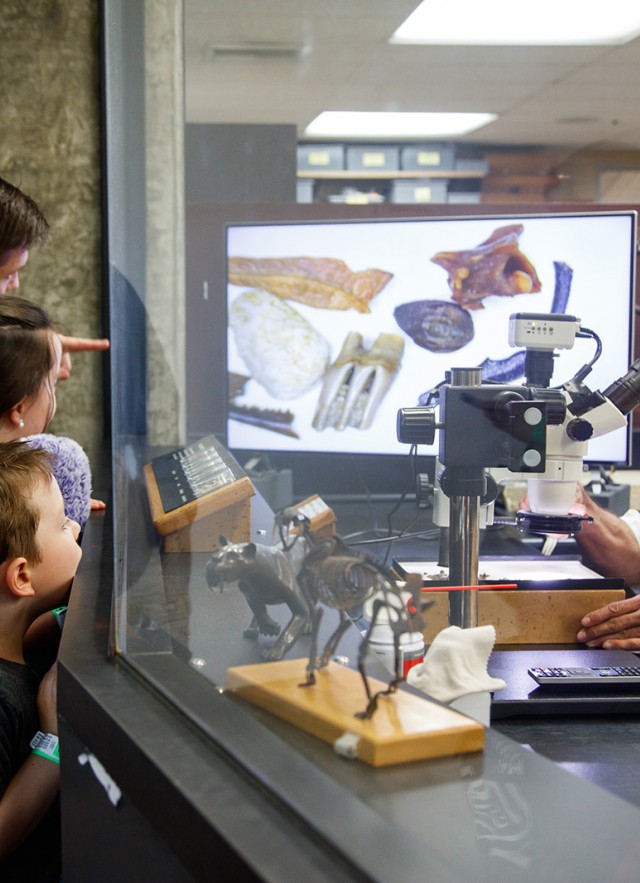Press Release
La Brea Tar Pits Named to TIME for Kids’ List Of The World's 50 Coolest Places Of 2019
Los Angeles, December 5, 2019 - La Brea Tar Pits has been selected as one of the TIME for Kids World's Coolest Places of 2019. This is the first-ever annual list that recognizes 50 global destinations that provide enriching, educational, and innovative experiences.
To assemble the list, TIME for Kids gathered nominations from its network of TFK Kid Reporters and from young readers around the world. Each nomination was then evaluated on several factors, including quality, originality, sustainability, and accessibility.
The result: a list of 50 exciting, innovative, and iconic destinations around the world—from a Michelin-starred restaurant in Singapore with a gourmet kids’ menu to America’s tallest sand dunes, which are perfect for sledding.
Visitors young and old can explore La Brea Tar Pits and the Park where museum excavators can be seen working at active sites Project 23 and Pit 91. Inside the Museum, visitors see the next step of the process, as scientists and volunteers clean, repair, and identify those fossils — including the bones of “Zed,” the most complete Columbian mammoth ever found in the seeps—in the transparent Fossil Lab. Visitors can also experience the exhibition Mammoths and Mastodons at La Brea Tar Pits and find out what it’s like to get stuck in the “tar” with a Tar Pull.
With the installation of Mammoths and Mastodons based on a traveling exhibit organized by Chicago’s Field Museum, the museum at La Brea Tar Pits has totally changed its visitor experience. New experiences include life-sized models, hands-on interactives, and the latest discoveries and research relating to these extraordinary Ice Age animals—found both at the Tar Pits and around the world. This interactive experience invites visitors into the world of titans that lived across Asia, Africa, Europe, the L.A. Basin and California’s Channel Islands before they went extinct thousands of years ago.
After exploring the excavations in the Park, kids looking to try their hand at microfossil sorting will find volunteers stationed inside the museum ready to offer a quick training. They’ll work with volunteers to learn how to identify “fossil” material, and then get hands-on, using paintbrushes and sorting trays to divide matrix into the categories we use in our Fossil Lab – bones, plant matter, shells, insects, and discard.
Additional visitor experiences include daily screenings in the 3D theater of Titans of the Ice Age, which showcases the awe-inspiring mammals that lived 10,000 years before modern civilization. Plus, weekend live theater shows Ice Age Encounters features a life-size adult Saber-toothed Cat puppet, a live performance and film projections that bring the distant past to life.
See the full TIME for Kids list.
About La Brea Tar Pits
The asphalt seeps at La Brea Tar Pits are the only consistently active and urban Ice Age excavation site in the world. This makes the site a unique window into active science—where fossils are discovered, prepared, researched, and displayed in one place. Outside, visitors can watch excavators unearth fossils of the wildlife trapped in the seeps. Inside the Museum, scientists and volunteers clean, repair, and identify those very fossils. The best specimens are displayed and available for research: from extraordinary saber-toothed cats, giant sloths, dire wolves, mammoths, and mastodons—to microfossils of small animals and plants. These collections constitute an unparalleled resource for understanding environmental change in Los Angeles, and the planet, during the last 50,000 years of Earth’s history.
About the Natural History Museums of Los Angeles County
The Natural History Museums of Los Angeles County (NHMLAC) include the Natural History Museum in Exposition Park (NHM), La Brea Tar Pits, and the William S. Hart Museum. They operate under the collective vision to inspire wonder, discovery, and responsibility for our natural and cultural worlds. The museums hold one of the world’s most extensive and valuable collections of natural and cultural history—more than 35 million objects. Using these collections for groundbreaking scientific and historic research, the museums also incorporate them into nature and culture exploration in L.A. neighborhoods, and a slate of community science programs—creating a natural history museum experience that explores the past, but increasingly addresses the present and the future. Learn more here.
MEDIA CONTACTS
Sally Marquez
NHMLAC
smarquez@nhm.org
213.763.3580
